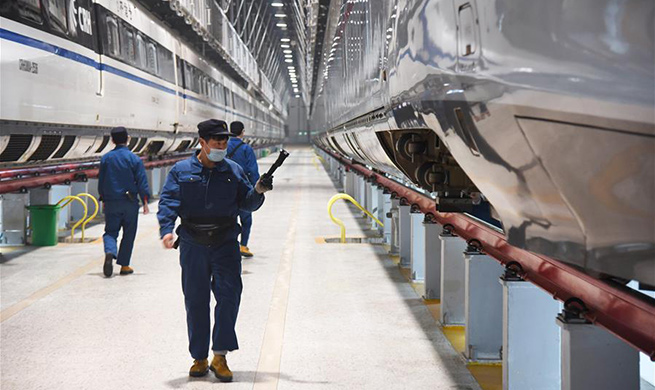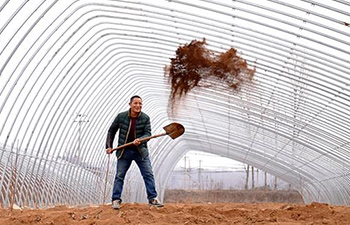CHENGDU, Feb. 13 (Xinhua) -- Moving along the rail track, two robotic arms scan and check the bottom of bullet trains, ensuring the trains could stand the test of China's Spring Festival travel rush.
The real-time data including images of the train bottoms can be captured by the high-definition cameras embedded in the arms and uploaded them to the control center.
The robotic arms are among a growing number of robots employed in China's railway system to improve efficiency and ensure safety, as railway trips are expected to hit 413 million in total during this year's Spring Festival travel rush, China's largest seasonal migration of people.
"The robots are very helpful because they are able to scan the train parts that can hardly be reached by inspectors," said Huang Wentao, an engineer with China Railway Chengdu Group Co., Ltd.
Besides reducing safety risks, the robots can significantly cut the inspection time. "It normally takes four inspectors two hours to check eight bullet trains, but the robots only need an hour to finish the job," Huang said.
Four navigation robots are also on duty in Wuhan Railway Station in central China's Hubei Province. The voice-controlled humanoids can answer passengers' questions and give directions.
In a railway substation in northwest China's Shaanxi Province, a 1.6-meter-tall robot roamed around to inspect the condition of the substation's equipment.
"The robot provides more precise inspection results," said Long Hongfeng, an inspector at the substation. "It is able to operate under extreme weather conditions, ensuring a stable power supply for the Xi'an-Chengdu high-speed railway."
This year's Spring Festival travel rush started from Jan. 21 and will last till March 1. By Tuesday, more than 210 million railways trips had been made across China, according to the China Railway Corporation, the national railway operator.

















